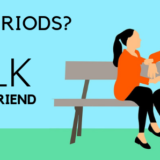𝐖𝐡𝐚𝐭 𝐢𝐬 𝐌𝐮𝐬𝐢𝐜 𝐓𝐡𝐞𝐫𝐚𝐩𝐲 & 𝐡𝐨𝐰 𝐝𝐨𝐞𝐬 𝐢𝐭 𝐰𝐨𝐫𝐤 𝐭𝐨 𝐫𝐞𝐥𝐢𝐞𝐯𝐞 𝐬𝐭𝐫𝐞𝐬𝐬?

1. Can listening to live or recorded music significantly improve health in patients before, during and after surgeries/treatment?
Yes music therapy helps to improve the health of patients significantly. Lots of research has been done on it & still going on & the results are much satisfactory. Specially trained musicians are now emerging as the music therapist to help the patients especially in chronic conditions and the patients are really showing improvement clinically. The therapists are using the clinical and evidence based use of music to help patients.
Music covers all the aspects of our health like physical, emotional, mental, spiritual, cognitive, and social needs. After assessing the strengths and needs of each client, the qualified music therapist provides the indicated treatment including creating, singing, moving to, and/or listening to music. Through musical involvement in the therapeutic context, clients’ abilities are strengthened and transferred to other areas of their lives. Music therapy also provides avenues for communication that can be helpful to those who find it difficult to express themselves in words. Research in music therapy supports its effectiveness in many areas such as: overall physical rehabilitation and facilitating movement, increasing people’s motivation to become engaged in their treatment, providing emotional support for clients and their families, and providing an outlet for expression of feelings.
Music therapy comes in two different forms: active and receptive. In active therapy, the therapist and patient actively participate in creating music with instruments, their voice, or other objects. This allows for the patient to be creative and expressive through the art of music. Receptive therapy takes place in a more relaxed setting where the therapist plays or makes music to the patient who is free to draw, listen or meditate. Usually the therapist determines the method unless specifically requested by the patient.
2. Are you experimenting with various genre of music when it comes to treatment? How do you use music, setting etc?
Live piano and even recorded instrumental music has been the most useful in my clinical practice when used for relaxation.
3. Can you share a case study where a patient felt better after going through music therapy?
We have helped a few expecting mothers relieve them of tension due to the stress of previous pregnancy mishaps or bad obstetric history due to abortions. It gives a relaxing effect. Now music therapy is becoming much popular to elevate the mood and confidence not only in diseased persons but also in natural labour as a pain relief measure.
Any kind of music is helpful. The music therapist works according to the need of the individual and their preferences. Its not the particular music or particular instrument, but what the patient likes is more important.. All styles of music have the potential to be useful in effecting change in a client’s or a patient’s life. The individual’s preferences, circumstances and need for treatment, and the goals established will help the trained music therapist determine what music to use.
5. How does music therapy help in releasing hormones that pep up the mood?
Music therapy causes the release of certain hormones in the brain which regulates autonomic, emotional, and cognitive function of the body. Music therapy allows persons with mental health needs to: explore personal feelings, make positive changes in mood and emotional states, have a sense of control over life through successful experiences, practice problem solving, and resolve conflicts leading to stronger family and peer relationships.
Listening to ‘relaxing music’ has been shown to reduce stress and anxiety in healthy subjects, patients undergoing invasive medical procedures like surgery, colonoscopy, dental procedures, pediatric patients undergoing medical procedures and patients with coronary heart disease. Music following surgery has also been found to reduce sedation, as well as pain and analgesic requirements, although the effect sizes are small. These effects are owing to the ability of music to distract or modulate mood.
6. Can music therapy reduce depression in children and adolescents with behavioural and emotional problems?
The research has shown the very positive effect in children & adolescents especially those who are mentally disabled, have autism or require rehabilitation. The intensely captivating and attention enhancing quality of music motivates children to participate in physical activity or exercise by easing the discomfort and strenuousness of the physical rehabilitation and helps them to persevere without being conscious of the difficulty. Music can be an element of distraction, allowing them to transcend into a positive, aesthetically-pleasing state that is beneficial to achieving their goals. Research suggests a strong connection between motor activation and the cueing of musical rhythm. Rhythmic stimuli has been found to help balance training for those with a brain injury. Singing training has been found to improve lung, speech clarity, and coordination of speech muscles, thus, accelerating rehabilitation of such neurological impairments in children. Use of music therapy has also demonstrated improvements of socially acceptable behaviours. .
Children with autism are nonverbal and many have difficulty understanding verbal commands. Music therapy becomes very useful as it has been found that music can improve the mapping of sounds to actions. So by pairing music with actions, and with many hours of training the neural pathways for speech can be improved and also help in improving the self-esteem of the child.
To conclude, music helps to stabilize moods, increase frustration tolerance, identify a range of emotions, and improve self-expression along with much more.












posted comments